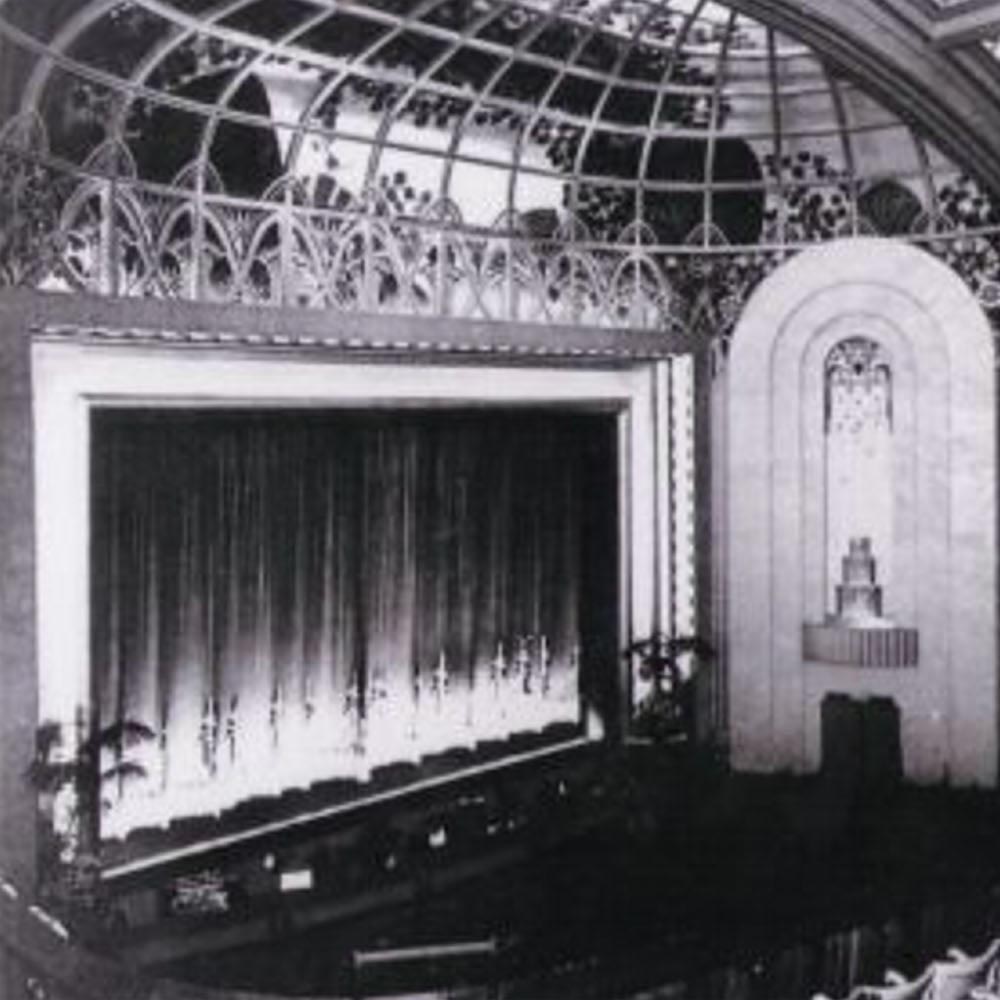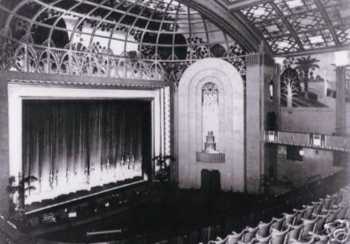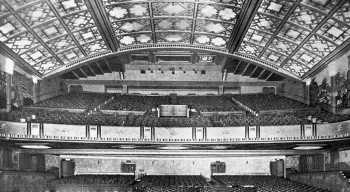
<< Go Back up to Atmospheric Theatres Main Page



The Astoria in Streatham opened in June 1930 with Jack Buchanan starring in Paris  , plus a variety show with over 100 performers including Teddy Brown playing the xylophone and 10 other acts. Seating was provided for 2,614 in stalls and circle levels. It was the third of the four famous Astoria theatres (the Astoria Brixton, the Astoria Old Kent Road (demolished), and the Astoria Finsbury Park) which were built in the suburbs of London by independent exhibitor Arthur Segal.
, plus a variety show with over 100 performers including Teddy Brown playing the xylophone and 10 other acts. Seating was provided for 2,614 in stalls and circle levels. It was the third of the four famous Astoria theatres (the Astoria Brixton, the Astoria Old Kent Road (demolished), and the Astoria Finsbury Park) which were built in the suburbs of London by independent exhibitor Arthur Segal.

The exterior is designed in a modern style, the the walls in multi-colored brick with stone embellishments and a tiled roof. The interior was Egyptian in style and was designed by interior designers Marc-Henri & G. Laverdet. There were originally fish tanks in the foyer. Inside the auditorium were two large bas relief panels on the side-walls at circle level, one representing a hunting scene with horses and chariots and lions, and the other representing a river scene with boats, both murals having a stylized Egyptian background. The ceiling of the auditorium had a complex lattice work which was suspended, and was backlit with varying colors, giving a semi-Atmospheric style appearance to the building. The theatre had a fully equipped stage and dressing rooms, there was a Compton 3-manual 12-rank theatre organ, which was opened by Al Bollington. Above the entrance was a café, again decorated in an Egyptian style.
The theatre was taken over by Paramount Pictures in December 1930 and then by Oscar Deutsch’s Odeon Theatres Ltd from 27th November 1939. It was closed by the Rank Organization on 2nd September 1961 for modernization, which removed most of the interior except for the auditorium ceiling. The final program in the original auditorium was “Information Received” and Rock Hudson & Kirk Douglas in “The Last Sunset”. It re-opened on 18th September 1961 as the Odeon, with film star Juliet Mills attending in person and a Gala screening of her latest film “No, My Darling Daughter”.

During the 1960’s and into the 1970’s, the stage was brought back into use. In 1968, the London Festival Ballet presented two successful seasons and a pantomime “Cinderella” starring Dick Emery & Joe Brown was staged for 3 weeks at Christmas 1968. At Christmas 1969 the pantomime “Aladdin” was staged, starring Herman’s Hermits and Norman Vaughan. The London Festival Ballet returned in 1970 and Tony Blackburn starred in a pantomime in 1974. One night stands of concerts by The Four Tops, The Supremes, Mud, and Stevie Wonder were staged in late-1978. The last live show to be staged at the Odeon was a concert by Ian Drury in December 1978.
The Odeon was tripled from 16th December 1979 with 1,095 seats in the former balcony screen, using the original projection box, and opening with “Death Sport”. Two 267 seat screens beneath the balcony in the former rear stalls, with a newly constructed projection box, opened with Harrison Ford in “Hanover Street” and “Casey’s Shadow” in screen 2, and Klaus Kinski in “Nosferatu The Vampire” in screen 3.
Dolby stereo was installed in Screen 1 on 27th January 1983. The old screen on the stage was flown out and the safety curtain was lowered permanently. A new screen was installed in front of the safety curtain.
Another new screen was installed in Screen 1 on 16th November 1984, this was placed in front of where the original balcony front was located, making Screen 1 a more intimate space and improved the acoustic properties of the cinema. Some of the original lattice-work ceiling still survives in Screen 1. In September 1991 a fourth screen seating 240 was added in the former front stalls and a fifth screen seating 196 was built on the former stage.
The Odeon was refurbished in 2001, and in May 2001 two additional screens were added in the former rear circle area and the front stalls screen was divided into two screens. The building now contains an Odeon 8-screen complex.
Information largely sourced from Cinema Treasures  .
.
 Further Reading
Further Reading .
. , the UK’s premier theatre and cinema history website.
, the UK’s premier theatre and cinema history website.Photographs copyright © 2002-2026 Mike Hume / Historic Theatre Photos unless otherwise noted.
Text copyright © 2017-2026 Mike Hume / Historic Theatre Photos.
For photograph licensing and/or re-use contact us here  . See our Sharing Guidelines here
. See our Sharing Guidelines here  .
.
| Follow Mike Hume’s Historic Theatre Photography: |  |
 |